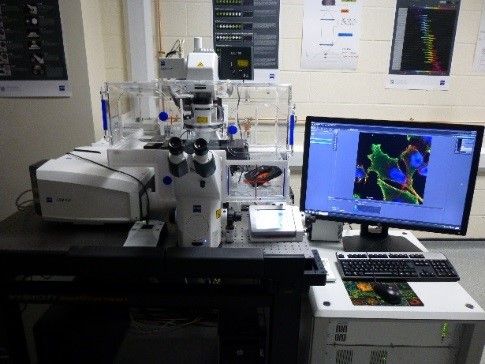Bio-imaging and Flow Cytometry
Super-resolution Microscopes
Super Resolution Microscopy
The resolution that can be achieved by traditional light microscopy is limited by the diffraction of light, which sets the shortest distance distinguishable between two points at ~half the wavelength of light (>200nm).
There are a diverse range of fundamental cellular processes that take place below the resolution limit of light and fluorescence microscopy. Super resolution microscopy uses a number of techniques to push beyond the 200nm barrier to enable the study of cellular structure and dynamic processes that couldn’t previously be imaged by standard imaging techniques.
Fluorescent super-resolution techniques enable highly specific, multi-colour imaging of both live and fixed cells.


